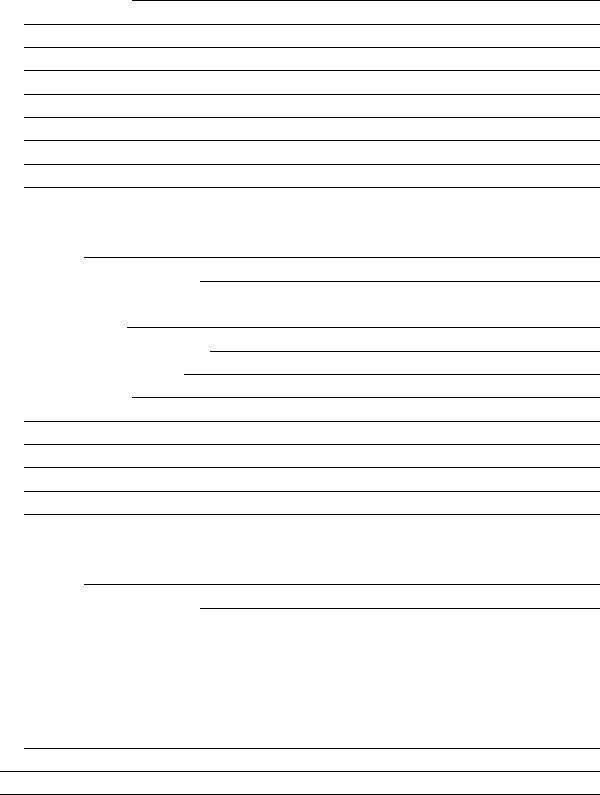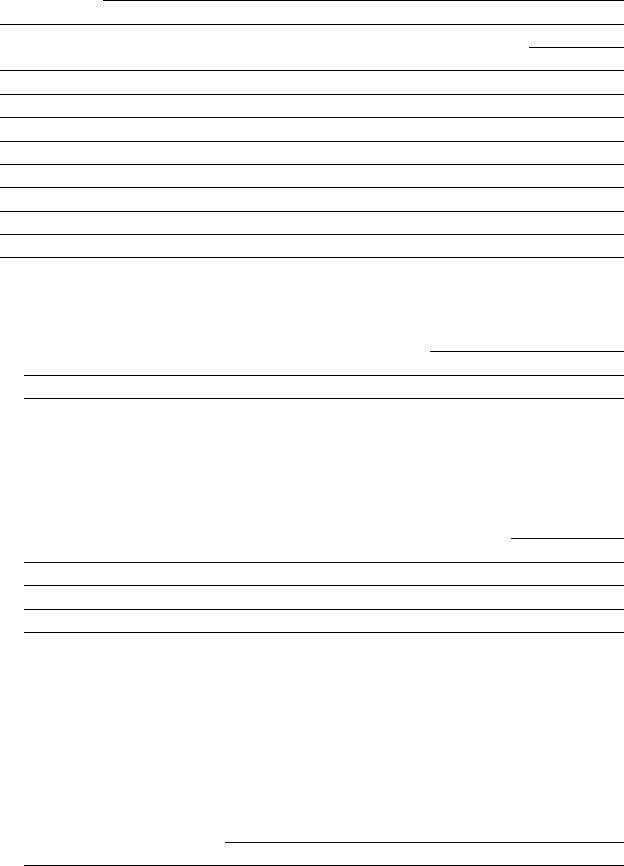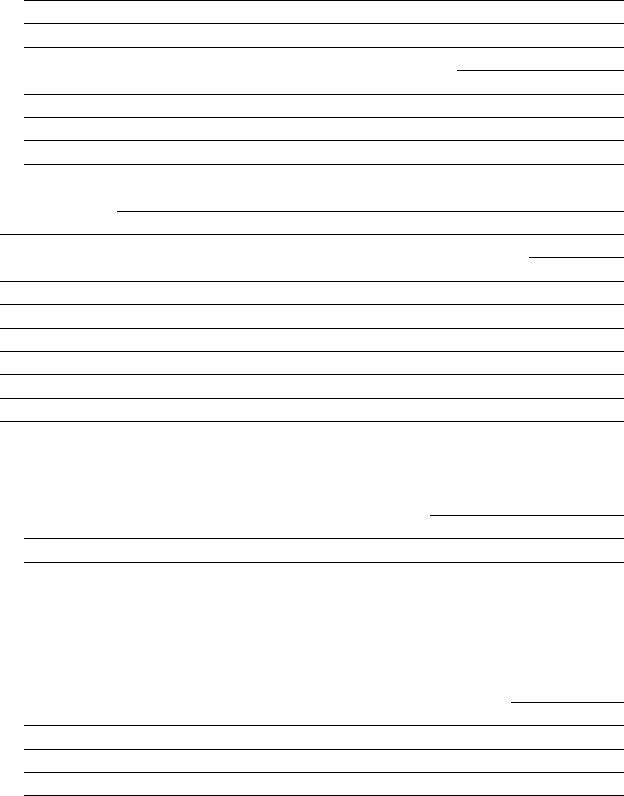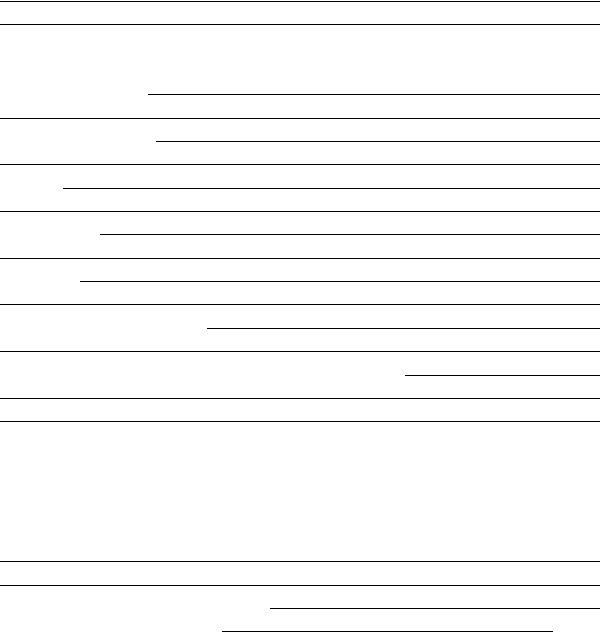In the realm of federal legal proceedings, the Motion to Vacate, Set Aside, or Correct a Sentence under 28 U.S.C. § 2255 stands as a critical mechanism for individuals serving federal sentences to challenge the legality of their conviction or sentence. Designed for those under federal custody, this form encapsulates the procedural path for petitioners to assert their rights for relief from convictions or sentences adjudged against them in federal courts. The process mandates filing in the jurisdiction where the original judgment was passed, underscoring the necessity of precision and truthfulness in completing the form to avoid the severe consequences of perjury. The comprehensive nature of the form requires petitioners to detail all grounds for relief, backed by factual support, without the need to delve into legal citations, although it allows for supplemental pages and separate memorandums for briefs or arguments. Crucially, the form explicitly warns against omitting any grounds for relief, as such omissions may preclude the opportunity to introduce them at a later stage, highlighting the importance of thoroughness from the outset. Additionally, the form provides avenues for individuals unable to bear the costs associated with their motion, including the option to proceed in forma pauperis, thereby ensuring that financial constraints do not bar access to seeking justice. This procedural avenue, the Motion to Vacate, Set Aside, or Correct a Sentence, therefore embodies not just a legal instrument but a beacon of hope for those contesting the fairness of their federal convictions or sentences, predicated on a wide array of grounds from coerced confessions to denial of effective assistance of counsel.
| Question | Answer |
|---|---|
| Form Name | Form 2255 |
| Form Length | 13 pages |
| Fillable? | No |
| Fillable fields | 0 |
| Avg. time to fill out | 3 min 15 sec |
| Other names | 2255 motion, 2255 form, form 2255, form 28 usc 2255 |

Page 1
Motion to Vacate, Set Aside, or Correct a Sentence
By a Person in Federal Custody
(Motion Under 28 U.S.C. § 2255)
Instructions
1.To use this form, you must be a person who is serving a sentence under a judgment against you in a federal court. You are asking for relief from the conviction or the sentence. This form is your motion for relief.
2.You must file the form in the United States district court that entered the judgment that you are challenging. If you want to challenge a federal judgment that imposed a sentence to be served in the future, you should file the motion in the federal court that entered that judgment.
3.Make sure the form is typed or neatly written.
4.You must tell the truth and sign the form. If you make a false statement of a material fact, you may be prosecuted for perjury.
5.Answer all the questions briefly. You do not need to cite law. You may submit additional pages if necessary. If you do not fill out the form properly, you will be asked to submit additional or correct information. If you want to submit a brief or arguments, you must submit them in a separate memorandum.
6.If you cannot pay for the costs of this motion (such as costs for an attorney or transcripts), you may ask to proceed in forma pauperis (as a poor person). To do that, you must fill out the last page of this form. Also, you must submit a certificate signed by an officer at the institution where you are confined showing the amount of money that the institution is holding for you.
7.In this motion, you may challenge the judgment entered by only one court. If you want to challenge a judgment entered by a different judge or division (either in the same district or in a different district), you must file a separate motion.
8.When you have completed the form, send the original and two copies to the Clerk of the United States District Court at this address:
Clerk, United States District Court for
Address
City, State Zip Code
9.CAUTION: You must include in this motion all the grounds for relief from the conviction or sentence that you challenge. And you must state the facts that support each ground. If you fail to set forth all the grounds in this motion, you may be barred from presenting additional grounds at a later date.

Page 2
MOTION UNDER 28 U.S.C. § 2255 TO VACATE, SET ASIDE, OR CORRECT
SENTENCE BY A PERSON IN FEDERAL CUSTODY
United States District Court
District
Name:
Case No.:
Place of Confinement:
Prisoner No.:
UNITED STATES OF AMERICA |
Movant (include name under which convicted) |
v.
MOTION
1.(a) Name and location of court that entered the judgment of conviction you are challenging:
(b) Criminal docket number (if you know):
2.Date of the judgment of conviction:
3.Length of sentence:
4.Nature of crime (all counts):
5.(a) What was your plea? (Check one)
(1) |
Not guilty “ |
(3) |
Nolo contendere (no contest) “ |
(2)Guilty “
(b)If you entered a guilty plea to one count or indictment, and a not guilty plea to another count or indictment, what did you plead guilty to and what did you plead not guilty to?
6.Kind of trial: (Check one)

Page 3
Jury “ Judge only “
7.Did you testify at the trial? Yes “ No “
8.Did you appeal from the judgment of conviction? Yes “ No “
9.If you did appeal, answer the following:
(a)Name of court:
(b)Docket number (if you know):
(c)Result:
(d)Date of result (if you know):
(e)Citation to the case (if you know):
(f)Grounds raised:
(g) Did you file a petition for certiorari in the United States Supreme Court? |
Yes “ No “ |
|||||||
If “Yes,” answer the following: |
|
|||||||
(1) |
Docket number (if you know): |
|
|
|||||
(2) |
Result: |
|
|
|||||
|
|
|
|
|
|
|
||
(3) |
Date of result (if you know): |
|
|
|||||
(4) |
Citation to the case (if you know): |
|
|
|||||
(5) |
Grounds raised: |
|
||||||
|
|
|
|
|
|
|
|
|
|
|
|
|
|
|
|
|
|
|
|
|
|
|
|
|
|
|
|
|
|
|
|
|
|
|
|
|
|
|
|
|
|
|
|
|
10.Other than the direct appeals listed above, have you previously filed any other motions, petitions, or applications concerning this judgment of conviction in any court?
Yes “ No “
11.If your answer to Question 10 was “Yes,” give the following information:
(a)(1) Name of court:
(2)Docket number (if you know):
(3)Nature of the proceeding:

Page 4
(4) Grounds raised:
(5)Did you receive a hearing where evidence was given on your motion, petition, application? Yes “ No “
(6)Result:
(7)Date of result (if you know):
(b)If you filed any second motion, petition, or application, give the same information:
(1)Name of court:
(2)Docket number (if you know):
(3)Nature of the proceeding:
(4)Grounds raised:
(5)Did you receive a hearing where evidence was given on your motion, petition, or application? Yes “ No “
(6)Result:
(7)Date of result (if you know):
(c)Did you appeal to a federal appellate court having jurisdiction over the action taken on your motion, petition, or application?
(1) |
First petition: |
Yes “ |
No |
“ |
(2) |
Second petition: |
Yes “ |
No |
“ |
(d)If you did not appeal from the action on any motion, petition, or application, explain briefly why you did not:

Page 5
12.For this motion, state briefly every ground on which you claim that you are being held in violation of the Constitution, laws, or treaties of the United States. Attach additional pages if you have more than four grounds. Summarize briefly the facts supporting each ground.
CAUTION: If you fail to set forth all the grounds in this motion, you may be barred from presenting additional grounds at a later date.
For your information, the following is a list of the most frequently raised grounds for relief. Each one is a separate ground for possible relief. You may raise other grounds besides those listed. However, you should raise in this motion all available grounds (relating to this conviction or sentence) on which you base your claim that you are being held in custody unlawfully.
•Conviction obtained by plea of guilty which was unlawfully induced or not made voluntarily or with understanding of the nature of the charge and the consequences of the plea.
•Conviction obtained by use of coerced confession.
•Conviction obtained by use of evidence gained pursuant to an unconstitutional search and seizure.
•Conviction obtained by use of evidence obtained pursuant to an unlawful arrest.
•Conviction obtained by a violation of the privilege against
•Conviction obtained by the unconstitutional failure of the prosecution to disclose to the defendant evidence favorable to the defendant.
•Conviction obtained by a violation of the protection against double jeopardy.
•Conviction obtained by action of a grand or petit jury which was unconstitutionally selected and impaneled.
•Denial of effective assistance of counsel.
•Denial of right of appeal.
Do not check any of these listed grounds. If you select one or more of these grounds for relief, you must set out in the space provided below the facts that support your claims.
GROUND ONE:
(a) Supporting facts (Do not argue or cite law. Just briefly state the facts that support your claim.):

Page 6
(b)Direct Appeal of Ground One:
(1)If you appealed from the judgment of conviction, did you raise this issue? Yes “ No “
(2)If you did not raise this issue in your direct appeal, briefly explain why:
(c)
(1)Did you raise this issue in any
(2)If your answer to Question (c)(1) is “Yes,” state the type of motion, petition, or application, the name and location of the court where the motion or petition was filed, the case number (if you know), the date of the court’s decision, and the result. Attach a copy of the court’s opinion or order, if available.
(3)Did you receive a hearing on your motion, petition, or application? Yes “ No “
(4)Did you appeal from the denial of your motion, petition, or application? Yes “ No “
(5)If your answer to Question (c)(4) is “Yes,” did you raise this issue in the appeal? Yes “ No “
(6)If your answer to Question (c)(4) is “Yes,” state the name and location of the court where the appeal was filed, the case number (if you know), the date of the court’s decision, and the result. Attach a copy of the court’s opinion or order, if available.
(7) If your answer to Question (c)(4) or Question (c)(5) is “No,” briefly explain:

Page 7
GROUND TWO:
(a) Supporting facts (Do not argue or cite law. Just briefly state the facts that support your claim.):
(b)Direct Appeal of Ground Two:
(1)If you appealed from the judgment of conviction, did you raise this issue? Yes “ No “
(2)If you did not raise this issue in your direct appeal, briefly explain why:
(c)
(1)Did you raise this issue in any
(2)If your answer to Question (c)(1) is “Yes,” state the type of motion, petition, or application, the name and location of the court where the motion or petition was filed, the case number (if you know), the date of the court’s decision, and the result. Attach a copy of the court’s opinion or order, if available.
(3)Did you receive a hearing on your motion, petition, or application? Yes “ No “
(4)Did you appeal from the denial of your motion, petition, or application? Yes “ No “
(5)If your answer to Question (c)(4) is “Yes,” did you raise this issue in the appeal? Yes “ No “
(6)If your answer to Question (c)(4) is “Yes,” state the name and location of the court where the appeal was filed, the case number (if you know), the date of the court’s decision, and the result. Attach a copy of the court’s opinion or order, if available.

Page 8
(7) If your answer to Question (c)(4) or Question (c)(5) is “No,” briefly explain:
GROUND THREE:
(a) Supporting facts (Do not argue or cite law. Just briefly state the facts that support your claim.):
(b)Direct Appeal of Ground Three:
(1)If you appealed from the judgment of conviction, did you raise this issue? Yes “ No “
(2)If you did not raise this issue in your direct appeal, briefly explain why:
(c)
(1)Did you raise this issue in any
(2)If your answer to Question (c)(1) is “Yes,” state the type of motion, petition, or application, the name and location of the court where the motion or petition was filed, the case number (if you know), the date of the court’s decision, and the result. Attach a copy of the court’s opinion or order, if available.
(3)Did you receive a hearing on your motion, petition, or application? Yes “ No “
(4)Did you appeal from the denial of your motion, petition, or application?

Page 9
Yes “ No “
(5)If your answer to Question (c)(4) is “Yes,” did you raise this issue in the appeal? Yes “ No “
(6)If your answer to Question (c)(4) is “Yes,” state the name and location of the court where the appeal was filed, the case number (if you know), the date of the court’s decision, and the result. Attach a copy of the court’s opinion or order, if available.
(7) If your answer to Question (c)(4) or Question (c)(5) is “No,” briefly explain:
GROUND FOUR:
(a) Supporting facts (Do not argue or cite law. Just briefly state the facts that support your claim.):
(b)Direct Appeal of Ground Four:
(1)If you appealed from the judgment of conviction, did you raise this issue? Yes “ No “
(2)If you did not raise this issue in your direct appeal, briefly explain why:
(c)
(1)Did you raise this issue in any
(2)If your answer to Question (c)(1) is “Yes,” state the type of motion, petition, or application, the name and

Page 10
location of the court where the motion or petition was filed, the case number (if you know), the date of the court’s decision, and the result. Attach a copy of the court’s opinion or order, if available.
(3)Did you receive a hearing on your motion, petition, or application? Yes “ No “
(4)Did you appeal from the denial of your motion, petition, or application? Yes “ No “
(5)If your answer to Question (c)(4) is “Yes,” did you raise this issue in the appeal? Yes “ No “
(6)If your answer to Question (c)(4) is “Yes,” state the name and location of the court where the appeal was filed, the case number (if you know), the date of the court’s decision, and the result. Attach a copy of the court’s opinion or order, if available.
(7) If your answer to Question (c)(4) or Question (c)(5) is “No,” briefly explain:
13.Is there any ground in this motion that has not been presented in some federal court? If so, which ground or grounds have not been presented, and briefly state your reasons for not presenting them:
14. Do you have any motion, petition, or appeal now pending (filed and not decided yet) in any court for the
judgment you are challenging? Yes “ No “
If “Yes,” state the name and location of the court, the case number, the type of proceeding, and the issues raised.

Page 11
15.Give the name and address, if known, of each attorney who represented you in the following stages of the judgment you are challenging:
(a)At preliminary hearing:
(b)At arraignment and plea:
(c)At trial:
(d)At sentencing:
(e)On appeal:
(f)In any
(g)On appeal from any ruling against you in a
16.Were you sentenced on more than one count of an indictment, or on more than one indictment, in the same
court and at the same time? Yes “ No “
17. Do you have any future sentence to serve after you complete the sentence for the judgment that you are
challenging? |
Yes “ No “ |
(a)If so, give name and location of court that imposed the other sentence you will serve in the future:
(b)Give the date the other sentence was imposed:
(c)Give the length of the other sentence:
(d)Have you filed, or do you plan to file, any motion, petition, or application that challenges the judgment or
sentence to be served in the future? |
Yes “ No “ |

Page 12
18.TIMELINESS OF MOTION: If your judgment of conviction became final over one year ago, you must explain why the
*The Antiterrorism and Effective Death Penalty Act of 1996 (“AEDPA”) as codified in 28 U.S.C. § 2255, paragraph 6, provides in part that:
A
(1)the date on which the judgment of conviction became final;
(2)the date on which the impediment to making a motion created by governmental action in violation of the Constitution or laws of the United States is removed, if the movant was prevented from making such a motion by such governmental action;
(3)the date on which the right asserted was initially recognized by the Supreme Court, if that right has been newly recognized by the Supreme Court and made retroactively applicable to cases on collateral review; or
(4)the date on which the facts supporting the claim or claims presented could have been discovered through the exercise of due diligence.

Page 13
Therefore, movant asks that the Court grant the relief to which he or she may be entitled.
Signature of Attorney (if any)
I declare (or certify, verify, or state) under penalty of perjury that the foregoing is true and correct and that this Motion Under 28 U.S.C. § 2255 was placed in the prison mailing system on
(month, date, year).
Executed (signed) on |
|
(date). |
Signature of Movant (required)
* * * * *
Model Form for Use in 28 U.S.C. § 2255 Cases
Involving a Rule 9 Issue (Abrogated)
[The advisory committee is developing a new form that
makes extensive revisions to the existing form.]